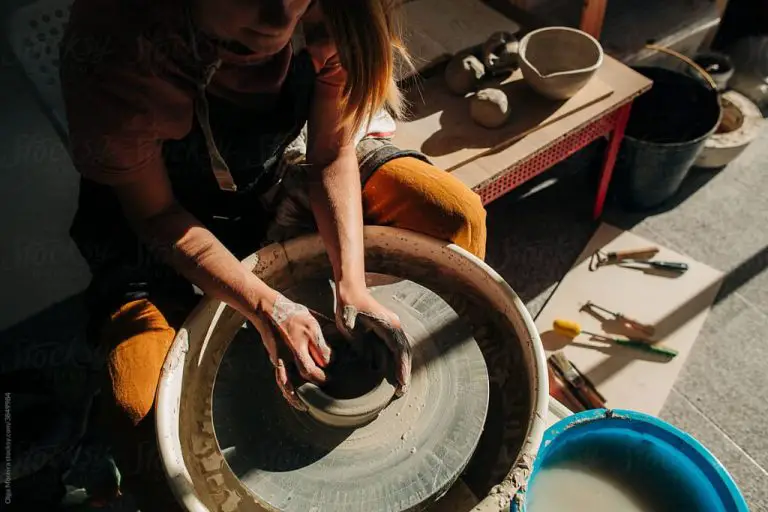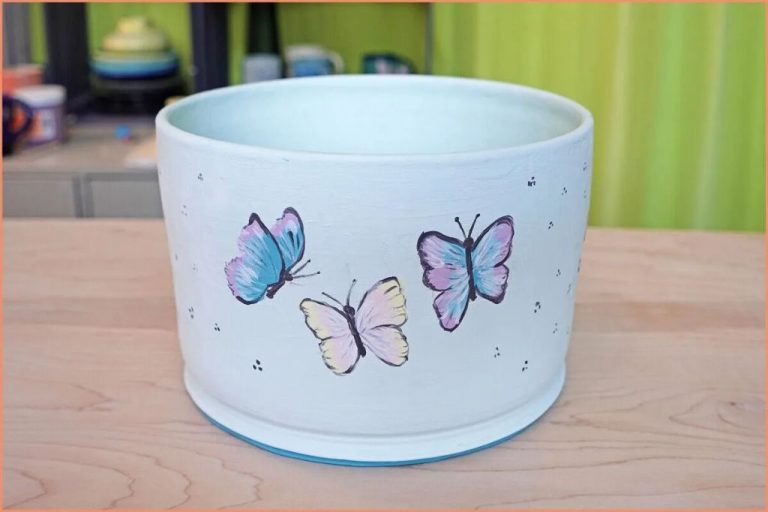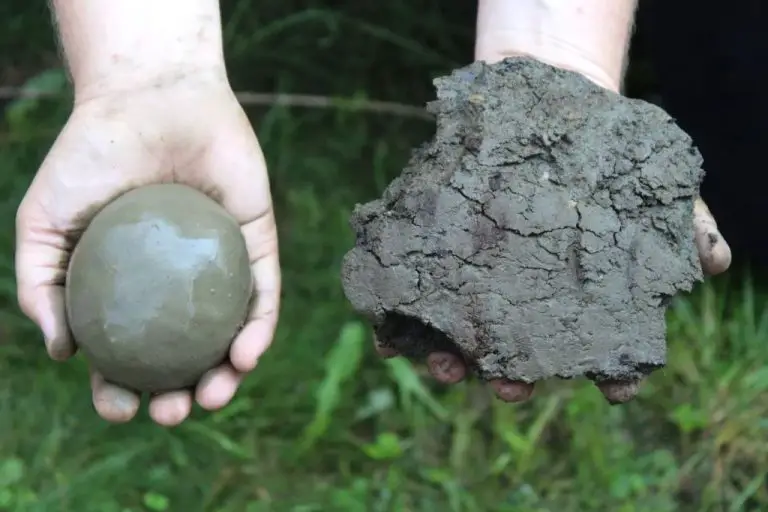Can Paper Clay Air Dry?
What is Paper Clay?
Paper clay is a modeling material that consists of clay particles and cellulose fiber from paper. The paper, usually recycled, is pulped and mixed with any natural clay in a process similar to paper making. The addition of paper makes the clay more flexible and lightweight than regular clay while still retaining its molding properties.
Paper clay was invented in the 1980s by Helen McElroy as she experimented with strengthening clay by adding paper. Since then it has grown in popularity among ceramic artists and crafters as an alternative modeling material to traditional clays like earthenware or porcelain.
Unlike regular clay that can crack as it dries, the cellulose fibers in paper clay hold the clay particles together, reducing cracking and allowing the clay to dry without firing in a kiln. This makes paper clay a versatile, easy to use modeling material. The finished pieces have a texture similar to terracotta or stone.
Benefits of Paper Clay
Paper clay has some key benefits that make it a popular choice for artists and crafters:
It is lightweight. The addition of cellulose fiber makes paper clay much lighter than regular pottery clay. This makes it easier to work with for extended periods and reduces shipping costs for finished pieces.
It doesn’t shrink or crack as much as regular clay. The fiber content in paper clay minimizes shrinkage and cracking during drying and firing. This helps maintain the structural integrity of sculpted or molded pieces.
It takes fine detail well. Paper clay holds very fine detail from sculpting or molding. The cellulose fiber allows for crisp edges and intricate textures to be achieved and maintained through drying and firing. Paper clay is great for detailed figural sculptures.
How Paper Clay is Made
Paper clay is made by combining clay and cellulose fiber, typically in a ratio of about 75% clay to 25% fiber. The cellulose fiber is often material like paper pulp or sawdust. The specific ratios can vary between brands and recipes, but in general the mixture is roughly 3 parts clay to 1 part fiber.
To make paper clay, first the clay and fiber components are measured out in the desired proportions. Then they are mixed together thoroughly, often using an electric mixer or blender, until the material forms a smooth and homogeneous mixture. It’s important to blend consistently so that the cellulose fibers are dispersed evenly throughout the clay body. Once fully mixed, the paper clay is ready to use in pottery, sculpture, jewelry making, and other artistic applications.
Working with Paper Clay
Paper clay has a soft, moist consistency that makes it extremely malleable and versatile to work with. It has a smooth, doughy texture similar to ceramic clay that allows it to be easily shaped, molded, carved, or sculpted into any form.
Because of its softness, most clay sculpting and modeling tools can be used with paper clay such as sculpting sticks, loop tools, ribs, cutters, rolling pins, texture mats and stamps. Paper clay is strong enough to support itself for sculpting free-standing pieces, but also soft enough to push into molds.
Some techniques commonly used when working with paper clay include:
- Handbuilding – shaping pieces by hand using pinch, coil, and slab techniques.
- Sculpting – forming shapes by cutting, carving, molding or other sculpting methods.
- Molding – pressing paper clay into molds to create shaped pieces.
- Extruding – forcing paper clay through a die to create long pieces like coils or tubes.
- Rolling & cutting – using a roller to flatten clay into sheets, then using cutters to cut shapes.
- Texturing – adding visual and tactile textures using stamps, mats, found objects.
- Smoothing – blending seams and surface texture using water, tools.
Paper clay’s soft texture allows limitless options for shaping, sculpting, molding, and building both functional and decorative clay creations.
Does Paper Clay Air Dry?
Yes, paper clay can air dry thanks to the cellulose fibers added during the manufacturing process. The cellulose allows moisture to evaporate from the clay slowly over time. However, air drying paper clay still takes 1-2 weeks until fully dry. The exact drying time depends on the thickness of the clay pieces. Thicker pieces will take longer to dry, while thinner pieces may only need a few days.
Tips for Air Drying Paper Clay
When air drying paper clay, follow these tips for best results:
Work in thin layers – Paper clay dries from the outside in, so working in layers 1/4 inch or less allows the moisture to fully evaporate. Thicker pieces will trap moisture in the center and may crack.
Allow adequate drying time – Depending on thickness, paper clay can take 24-48 hours or longer to fully dry. Give your pieces enough time to dry thoroughly before handling.
Use a drying rack – Set paper clay pieces on a rack to allow air circulation all around. Avoid resting pieces directly on surfaces that block airflow.
Rotate pieces as they dry – Regularly flip or rotate pieces to prevent warping or sagging as they dry. This allows even drying on all sides.
Other Drying Options
In addition to air drying, there are a couple other methods you can use to dry paper clay:
Oven Drying
You can dry paper clay in a regular kitchen oven. Set the oven to the lowest temperature, usually around 200°F. Place the paper clay pieces on a cookie sheet or ceramic baking dish and put them in the oven. Check frequently and remove pieces as soon as they are hardened, usually within 15-30 minutes. The benefit of oven drying is it is much faster than air drying. However, you need to be extremely careful not to overcook the clay, as it can scorch or crack if left in too long.
Microwave Drying
A microwave can also be used to quickly dry paper clay. Again, cook it at short intervals, checking every 30 seconds. Remove pieces as soon as they harden. Microwaving can speed up drying time even more than the oven. However, it’s important not to overcook the clay, as it can easily burn or warp from uneven drying in the microwave. Microwave drying requires vigilance.
So while the oven or microwave can accelerate drying, air drying is the safest option that is least likely to damage the clay. It just requires more time and patience. Choose the method that best suits your project and schedule needs.
Working with Dried Paper Clay
Once your paper clay sculptures and projects are fully dried, there are some important techniques to finish and refine the pieces.
Sanding is an essential part of finishing dried paper clay. Start with a coarse sandpaper like 120 grit to quickly smooth seams, bumps, and uneven areas. Then progress through finer grits like 220, 400, and 600 to achieve a smooth surface. Sand gently to avoid scratching or damaging the surface. Always sand in a circular motion.
After sanding, paper clay is highly absorbent and must be sealed prior to painting or further finishes. An acrylic sealer like matte or gloss medium is ideal for sealing paper clay. Apply 2-3 thin, even coats allowing it to dry completely between coats. Avoid using varnishes since they can sometimes react with the clay composition. Let the sealer fully cure for 24 hours before adding paint or handling the piece.
Acrylic paints work very well on sealed paper clay. Start with a base layer of gesso if you want a bright white foundation. Apply paint in thin layers, allowing drying time between coats. Pastels and colored pencils can also be used to add color after sealing.
Consider protective finishes like wax, varnish or water-based polyurethane if the sculpture will be handled frequently or exposed to elements. This provides an extra protective barrier and enhances the appearance of the clay.
With proper sanding, sealing and finishing, your dried paper clay creations will have a smooth, durable surface ready for display and use.
Paper Clay vs Air Dry Clay
Paper clay and air dry clay have some similarities, but also key differences that make each better for certain uses. The main considerations when comparing paper clay and air dry clay are:
Properties
Paper clay contains cellulose fiber added to porcelain or polymer clay. This gives it a different texture and working properties than regular clay. Air dry clay is made from a non-hardening material and can simply be left to dry out to harden.
Paper clay is lighter and more porous than air dry clay. It can be kneaded and shaped like polymer clay, while still drying hard. Air dry clay retains a moldable, bendable texture even when dry. Paper clay sands and carves well in the dried state, while air dry clay does not.
Uses
Paper clay is a good choice for detailed sculpting and modeling where you want the finished piece to be light but sturdy. It’s great for decorative pieces like figurines, jewelry, or vases. Air dry clay is ideal for crafts, DIY projects, and items made by kids. It allows endless reworking and is easy to shape.
Paper clay can be fired in a kiln for extra hardness and durability. Air dry clay is not kiln-safe. For pure air dry capability without firing, air dry clay is the better choice. Paper clay can be dried without firing but it will be more delicate.
So in summary, paper clay suits sculpture and high-end artisan crafts, while air dry clay is the go-to for casual modeling, kids’ projects, and rapid prototyping where flexibility matters more than strength.
Projects using Paper Clay
Paper clay is extremely versatile and can be used for a wide variety of crafting and art projects. Here are some of the most popular uses for paper clay:
Sculptures and Figurines
Paper clay is an excellent sculpting material. It’s lightweight, easy to work with, and holds fine detail well. Paper clay is commonly used to create figurines, statues, dolls, and other free-standing sculptures. The finished pieces can have a matte bisque-like appearance.
Jewelry and Beads
Jewelry designers often use paper clay to handcraft beads, pendants, and other accessories. Paper clay can be shaped, molded, carved, and textured. Once dried, it becomes very strong and durable. Paper clay jewelry can be left natural or painted.
Bowls, Pots, and Vases
With its clay-like properties, paper clay can be thrown on a potter’s wheel or hand built to create pottery pieces like bowls, mugs, and vases. Paper clay vessels maintain their shape without slumping or cracking as they dry.
Decorative Wall Plaques
Paper clay plaques make wonderful decorative wall hangings. Paper clay can be modeled into intricate textures and designs. Plaques can be carved, stamped, stenciled, or textured. Once dry, they can be painted, gilded, or distressed.
Dollhouse Miniatures
Miniaturists love using paper clay for dollhouse and miniature projects. Paper clay is lightweight enough for delicate work and perfect for sculpting tiny furnishings, decorative objects, and figurines with precise detail.




